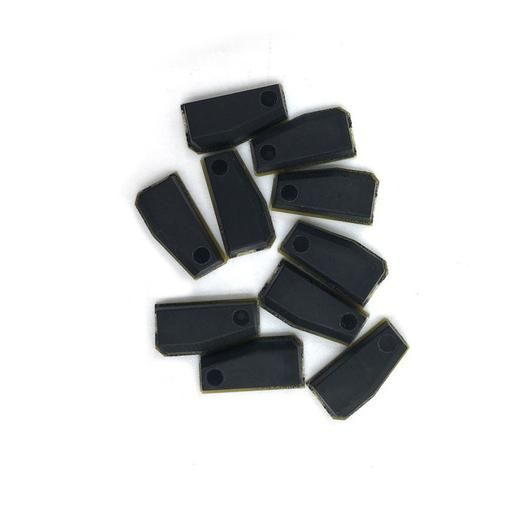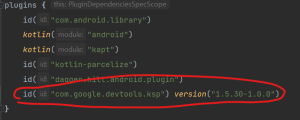Digital Signal Transponder 80 (DST-80) is an innovative technology that has revolutionized the way we transmit data wirelessly. It is a system designed to encode and decode digital signals, making it an ideal choice for a range of applications, including data communication, remote sensing, and tracking.
The DST-80 is a compact and lightweight device that can be easily integrated into any system that requires digital signal transmission. It is designed to work with a variety of communication protocols and can transmit and receive data at high speeds over long distances. The system is also highly reliable, with built-in error detection and correction features that ensure the accuracy of the transmitted data.
One of the primary applications of the DST-80 is in remote sensing. The system can be used to gather data from sensors located in remote or hard-to-reach locations, such as the deep sea, the atmosphere, or outer space. The DST-80 can transmit this data back to a central location, where it can be analyzed and used to make important decisions.
Another application of the DST-80 is in tracking. The system can be used to track the movement of vehicles, ships, and other mobile assets. By encoding the location data into a digital signal, the DST-80 can transmit this information to a central location, where it can be used to monitor the movement of the asset in real-time.
The DST-80 is also ideal for use in data communication. It can be used to transmit digital signals between two or more devices, such as computers, smartphones, or tablets. The system can be used to transmit a variety of data types, including text, images, audio, and video, making it a versatile solution for a range of communication needs.
One of the key advantages of the DST-80 is its ability to transmit data at high speeds over long distances. The system can transmit data at speeds of up to 80 megabits per second over distances of several kilometers, making it an ideal choice for applications that require high-speed data transmission over long distances.
In conclusion, the Digital Signal Transponder 80 (DST-80) is an innovative technology that has transformed the way we transmit data wirelessly. With its high-speed data transmission capabilities, built-in error detection and correction features, and versatility, the DST-80 is an ideal choice for a range of applications, including remote sensing, tracking, and data communication.
More about the DST-80 and its capabilities.
The DST-80 is a digital signal transponder that works by encoding and decoding digital signals. It operates using a variety of communication protocols, including Wi-Fi, Bluetooth, and Zigbee, among others. This means that the DST-80 can be easily integrated into a wide range of systems and can communicate with other devices that use these protocols.
One of the key features of the DST-80 is its ability to transmit data at high speeds over long distances. This is possible because the system uses a combination of advanced modulation techniques and error correction algorithms to ensure the accuracy of the transmitted data. The DST-80 can transmit data at speeds of up to 80 megabits per second, which is significantly faster than other wireless communication technologies.
The DST-80 is also highly reliable, thanks to its built-in error detection and correction features. The system can detect and correct errors that occur during transmission, ensuring that the transmitted data is accurate and reliable. This makes the DST-80 an ideal choice for applications that require high levels of accuracy and reliability, such as remote sensing and tracking.
Another advantage of the DST-80 is its compact and lightweight design. The system is small enough to be easily integrated into a wide range of devices and systems, without adding significant weight or size. This makes it an ideal choice for applications where space and weight are limited, such as in unmanned aerial vehicles (UAVs) or satellites.
In terms of applications, the DST-80 has many potential uses. As mentioned earlier, it can be used for remote sensing and tracking, as well as for data communication. In addition, the DST-80 can be used for a variety of other applications, including:
- Smart homes and buildings: The DST-80 can be used to connect and control smart home devices, such as thermostats, lighting, and security systems.
- Industrial automation: The DST-80 can be used to control and monitor industrial machinery and equipment, improving efficiency and reducing downtime.
- Healthcare: The DST-80 can be used to monitor vital signs and transmit health data wirelessly, enabling remote patient monitoring and telemedicine.
Overall, the DST-80 is a versatile and powerful digital signal transponder that has many potential applications. With its high-speed data transmission capabilities, built-in error detection and correction features, and compact design, the DST-80 is an ideal choice for a wide range of wireless communication needs.
Sure, here are some advantages and disadvantages of the DST-80:
Advantages:
- High-speed data transmission: The DST-80 can transmit data at speeds of up to 80 megabits per second, making it ideal for applications that require fast data transfer.
- Long-range communication: The DST-80 can transmit data over long distances, making it ideal for applications that require communication over large areas.
- Versatile communication protocols: The DST-80 can communicate using a variety of protocols, including Wi-Fi, Bluetooth, and Zigbee, among others, making it easy to integrate with other devices and systems.
- Reliable communication: The DST-80 has built-in error detection and correction features, ensuring that the transmitted data is accurate and reliable.
- Compact and lightweight: The DST-80 is small and lightweight, making it easy to integrate into a variety of devices and systems.
Disadvantages:
- Cost: The DST-80 can be more expensive than other wireless communication technologies, which can be a disadvantage for applications that require large-scale deployment.
- Power consumption: The high-speed data transmission capabilities of the DST-80 can require more power than other wireless communication technologies, which can be a disadvantage for applications that require long battery life.
- Interference: The DST-80 can be susceptible to interference from other wireless devices, which can affect the quality of the transmitted data.
- Complex implementation: Integrating the DST-80 into a system can be more complex than other wireless communication technologies, requiring specialized knowledge and expertise.
- Limited bandwidth: The DST-80 has limited bandwidth compared to some other wireless communication technologies, which can be a disadvantage for applications that require high-bandwidth data transfer.
Overall, the DST-80 has many advantages and is a powerful digital signal transponder with a range of potential applications. However, like any technology, it also has some limitations and disadvantages that should be considered when choosing a wireless communication solution for a particular application.









